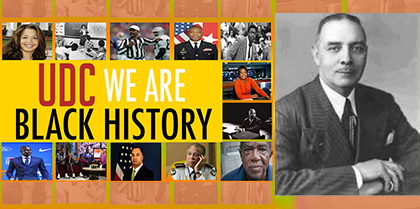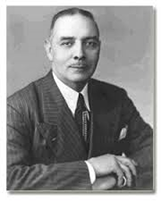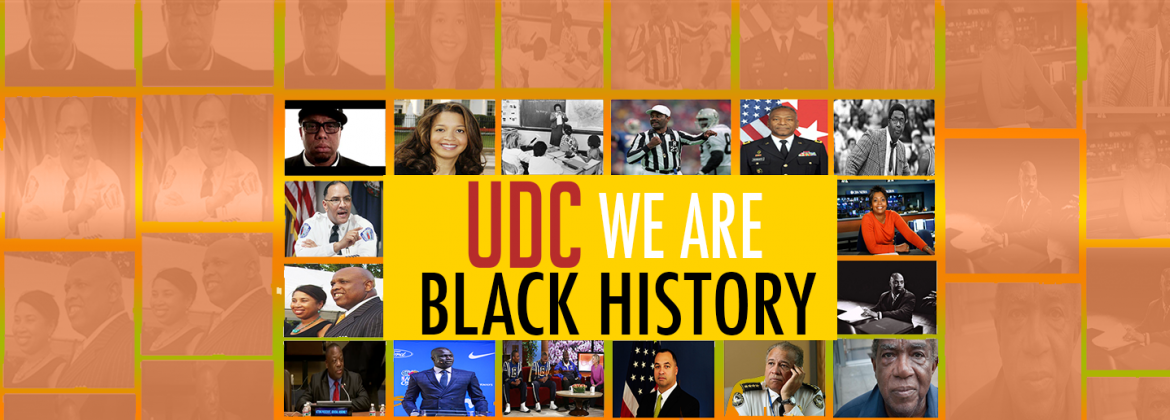
UDC: “We Are Black History”: Dr. Edwin Bancroft Henderson
UDC: “We Are Black History”
Dr. Edwin Bancroft Henderson
UDC Alumnus – The Grandfather of Black Basketball
 Sports historian, educator, administrator, coach, athlete, and civil rights activist, Dr. Edwin Bancroft Henderson was a pioneer promoter of African-American involvement in sports and physical education and is considered as the “Grandfather of Black Basketball.”
Sports historian, educator, administrator, coach, athlete, and civil rights activist, Dr. Edwin Bancroft Henderson was a pioneer promoter of African-American involvement in sports and physical education and is considered as the “Grandfather of Black Basketball.”
Born on November 24, 1883, Henderson was an honor roll student at M Street High School in Washington, DC, and a 1904 graduate of Miner Teachers College. He received an M.A. degree at Columbia University, and a Ph.D. in athletic training from Central Chiropractic College in Kansas City, Missouri.
Dr. Henderson introduced the game of basketball on a large-scale basis to African Americans for the first time between 1904 and 1910 and began a long and distinguished teaching career in the black public schools of Washington, D.C. He also continued his study of physical education by attending the Harvard Summer School of Physical Education. At Harvard, Henderson was introduced to the new discipline of physical education and the sport of basketball. In turn, Henderson brought the game of basketball to the African-American communities of Washington, D.C., New York, and other East Coast cities.
Henderson established the first African-American athletic leagues (ISAA, 1906). He also established the first organization of African-American referees and officials (Eastern Board of Officials, 1905). He was the first African American to be certified to teach physical education, receiving his certification at Harvard University between 1904 and 1907, where he learned the game of basketball. Henderson became a player himself in 1908 by forming the “Washington Twelfth Streeters” at the 12th Street YMCA in Washington, DC and dominated competitive basketball on the East coast, going undefeated and claiming the 1909-1910 “Colored Basketball World Championship.”
For 25 years, Henderson served as the director of the Department of Physical Education for the District of Columbia’s segregated black schools. Among the many students that Henderson coached, taught, and mentored were Charles R. Drew, Montague Cobb, and Duke Ellington.
Dr. Henderson was also a prolific writer and was the first academic researcher of African-Americans in sports. During his lifetime, Henderson is known to have written more than 3,000 Letters to the Editor for the Washington Post and other newspapers and magazines on civil rights and race relations. His articles appeared in a number of black periodicals including Crisis, The Messenger, and the Negro History Bulletin. Between 1910 and 1913, he co-edited the Spaulding sports equipment company’s Official Handbook of the Interscholastic Athletic Association of the Middle Atlantic States, which chronicled the birth of organized sports among African Americans on the East Coast. He also wrote the first scholarly documentation of African-American participation in sports with his seminal work, The Negro in Sports, under the auspices of Carter G. Woodson’s Associated Publishers, the publishing arm of the Association for the Study of African American Life and History (ASALH). The Negro in Sports was the first major study of black athletes and athletics, published in 1939 and revised in 1949.
Prompted by historian Charles H. Wesley, Woodson’s successor at the ASALH, Henderson published The Black Athlete: Emergence and Arrival in 1968. In 1976, Henderson wrote The Black American in Sports, which was included in Mabel M. Smythe’s The Black American Reference Book. This article was his last publication before his death in 1977.
Henderson established a branch of the National Association for the Advancement of Colored People (NAACP) in Falls Church, Va., and led the fight to end the segregationist seating policy of Uline Arena, the Washington, DC sporting facility that housed the basketball games of the Washington Capitols of the Basketball Association of America. When the Capitols joined the newly formed National Basketball Association in 1949, they drafted Harold Hunter and Earl Lloyd who became two of the NBA’s first African-American players. With his challenge to the Uline Arena’s segregation, Henderson helped open the doors into what is now a professional league where black players are dominant.
Edwin Bancroft Henderson died on February 3, 1977, at the age of 93. Among Henderson’s many accolades was his 1974 induction as a founding member of the Black Athletes Hall of Fame in New York City in a group that includes Jackie Robinson, Jesse Owens, Bill Russell, and Althea Gibson. In 2013, he was also posthumously inducted into the Naismith Basketball Hall of Fame in Springfield, Massachusetts.
For more information on this extraordinary trailblazer:
View the short film, The EB Henderson Story.
Replay the University’s EB Henderson Black History Month Celebration
Learn more about the EB Henderson Memorial Project.
View BlackPast.org.
